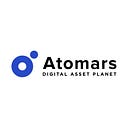General Overview of Theta Network (THETA)
What is Theta Network?
Theta Network is a blockchain-based, content-delivery platform that enables high-bandwidth content delivery using decentralized technology (a peer-to-peer mesh network). The current mainnet supports Samsung VR, Sliver.TV, and MBN, Korea’s largest business news outlet. In fact, the Theta Labs founding team also runs Sliver.TV and hopes to disrupt streaming video. THETA and TFUEL are the proprietary cryptocurrency tokens used by the network.
How Does Theta Network Work?
Theta Network goal is to create a more efficient way to deliver content in a global, peer-to-peer mesh network.
Tokens on the Theta blockchain are used to encourage individual users to share their idle computing and bandwidth resources as caching or relay nodes for video streams. This design aims to improve the quality of stream delivery and solves the “last-mile” delivery problem, which is the main bottleneck for traditional content delivery pipelines, especially so for high-resolution, high bitrate 4k, 8k, and next-generation streams.
With sufficient network density, the majority of viewers will pull streams from peering caching nodes, allowing video platforms to significantly reduce content delivery network (“CDN”) costs. By introducing tokens as an end-user incentive mechanism, the Theta Network aims to allow video platforms to deepen viewer engagement, drive incremental revenues, and differentiate their content and viewing experience from their competitors.
Theta uses a two-token model:
Theta Network (THETA) token
- Validator nodes (block production) or Guardian nodes (block finalization) can stake THETA tokens and can earn TFUEL (the 2nd token in Theta ecosystem) as a reward.
- THETA is the governance token of the protocol, so it represents a voting share on protocol decisions, upgrades, and more.
Theta Fuel (TFUEL) token
- TFUEL is used as the “gas” of the Theta protocol and is used to pay for transactions and smart contract deployment and operations.
- It is also the currency of micro-transactions for users to pay relayers for videos shared with them.
Key features or Theta Network
A peer-to-peer video delivery system
Theta’s mission is to create the first decentralized video streaming and delivery network, whereby video viewers are incentivized to share redundant computing and bandwidth resources to address today’s video streaming challenges.
- Bandwidth sharing mechanism with token rewards
Viewers are now rewarded to participate in the network by sharing excess bandwidth and resources. The tokens act as an incentive mechanism, as they relay video streams to other users. Not only does the Theta Token motivate viewers to join the network as caching nodes, it also greatly improves the streaming market efficiency by streamlining the video delivery process.
- High-quality and smooth video streaming
This decentralized peer-to-peer network delivers streams efficiently globally, through the Theta Mesh Delivery Network made up by the Peers. Each peer node may act both as a viewer, a caching node or both. As the node launches, during the handshake step, it retrieves a list of candidate peers from the geo-optimised server for the livestream it’s playing.
- Reduced cost of streaming delivery
With Theta, video platforms no longer need to build expensive infrastructure, which would mean more innovation and unique business models.
A high-speed infrastructure
For end-users, Theta’s focus is on providing a seamless way to interact with and contribute to the Theta ecosystem. These include products such as the wallet, block explorer, edge cacher nodes, and Guardian nodes. The official Theta wallet is available on mobile for iOS and Android, and also as a web-based version.
The Theta wallet is used for community members to participate in the mainnet token-swap and will operate as a secure way for users to hold THETA and TFUEL.
The block explorer is constantly being upgraded with additional features be added in the future.
Guardian nodes allow users to contribute to the consensus of the network by finalizing blocks that Validator nodes have proposed. Before the full rollout of the Guardian nodes, users have an opportunity to participate in the Guardian Node Onboarding Program, where users’ equipment is evaluated based on tech specs, node uptime, and other criteria.
The Theta management team expects the key metrics of the mainnet, as follows:
- The network should be able to support tens of Validator nodes and hundreds to thousands of Guardian nodes.
- On-chain TPS could reach at least 500 TPS, supporting 10,000+ TPS for bandwidth sharing reward since its blockchain provides native off-chain transaction support.
- The average transaction fee could be low, e.g., a minimum of 10–6 TFUEL per transaction.
- 6-second block period and 6-second average block finalization time.
- Block size of up to 8,192 transactions per block.
Additional key elements of Theta
Theta made three technical design choices that has drastically shaped the entire project.
- The consensus mechanism (Multi-Level Byzantine Fault Tolerant),
- Resource-Oriented Micropayment Pool,
- Aggregated Signature Gossip Scheme.
Read more details about the Theta Network project at https://www.thetatoken.org/
Theta Network (THETA) and Theta Fuel (TFUEL) trading on Atomars
Theta Network (THETA) and Theta Fuel (TFUEL) tokens are available for trading on Atomars exchange with the following trading pairs: THETA/BTC, THETA/ETH, THETA/USDT and TFUEL/ BTC, TFUEL/USDT
About Atomars Exchange
Atomars exchange is a digital assets trading platform launched in June 2019. Atomars exchange is a fast, safe, secure, and user-friendly platform that seeks to make everyone enjoy their time. Most of the popular cryptocurrencies like Bitcoin, Ethereum, Litecoin, and many more are available on the platform. Their web and mobile apps provide ease of easy and fun trading on the go. Unique features include decentralized private user wallets, quick exchange, enhanced user portfolio and market barometer section.
